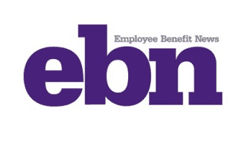
Reference-based pricing entered the conversation a few years ago as a solution and response to unsustainable healthcare price increases, and the model is still gaining traction among self-funded organizations. It is becoming increasingly popular as employers embrace an alternative solution that will help them cut costs.
There are clear benefits, but implementing a reference-based pricing model takes time, support and a significant amount of employee education. If you’re looking to make this change, here’s how to get reference-based pricing right and implement it for your organization and your employees.
Why Employers Are Embracing Reference-Based Pricing
In a reference-based pricing model, employers pay for medical services based on what Medicare pays (the “reference”) plus a specific percentage, rather than a percentage discount of billable charges. These reduced high-cost claims, such as inpatient and outpatient procedures, billed in a facility setting drive the plan savings in a reference-based pricing program. For most employers, this represents a small portion of their total claims but a large portion of their claims expenses.
Employers benefit from the reduced claims cost of reference-based pricing. They also gain total claims transparency and data, meaning they can see exactly what is being charged and how their plan is working for their employees.
Reference-based pricing can also open more care options and flexibility for employees, leading to lower costs for employees and employers.
However, in some cases, employees may be charged the difference between what the provider charges and what insurance pays—called a balance bill. While large or unexpected balance bills can be intimidating, participants who are properly educated will know who to contact to handle them. Many employers work with third-party administrators to further fight or negotiate these bills.
How to Get It Right
Implementing a reference-based pricing model takes time and requires ongoing employee education and organizational support for it to be successful. It’s up to the employer to teach participants how reference-based pricing works and how it impacts their healthcare choices.
Get Experts on Your Side
Speak with your benefits consultant or broker about how to lay out your roadmap for implementation and identify what success looks like for your organization. Because the biggest gains will likely only be realized on the most expensive claims, it can take a full year following implementation before you see the savings you’re looking for. It’s important to set goals for three, six and twelve months to measure progress.
Find a reference-based pricing vendor that can work with you and your broker to help implement tools employees will need to access their benefits and answer their questions. Additionally, make sure the vendor provides full legal representation and negotiation services for balance bills so you (or your employees) are never left to handle a balance bill on your own. It is also crucial that the vendor stands behind their program by signing on to your plan document as a co-fiduciary in the event of an extraordinary expense.
Educate Your Employees
Educate your employees on how to access care through the new health plan so they understand what to do if their doctor’s office staff is unfamiliar with the coverage. Work with your vendor, broker or third-party administrator to train your employees on how to access their benefits. Reference-based pricing vendors should offer employee advocacy representatives to help your employees choose the right healthcare providers, tell them what to expect when they walk into the doctor’s office and walk them through what to do if they get a balance bill.
What’s the Catch?
Reference-based pricing is a different way of doing healthcare, and it can be confusing for many employees. That confusion can lead to poorly informed healthcare choices and undo some of the benefits.
But if you take the proper steps to educate your employees and partner with experts to help you implement this process, reference-based pricing can help you curb extraneous medical spending and offer your employees greater flexibility and better care.





